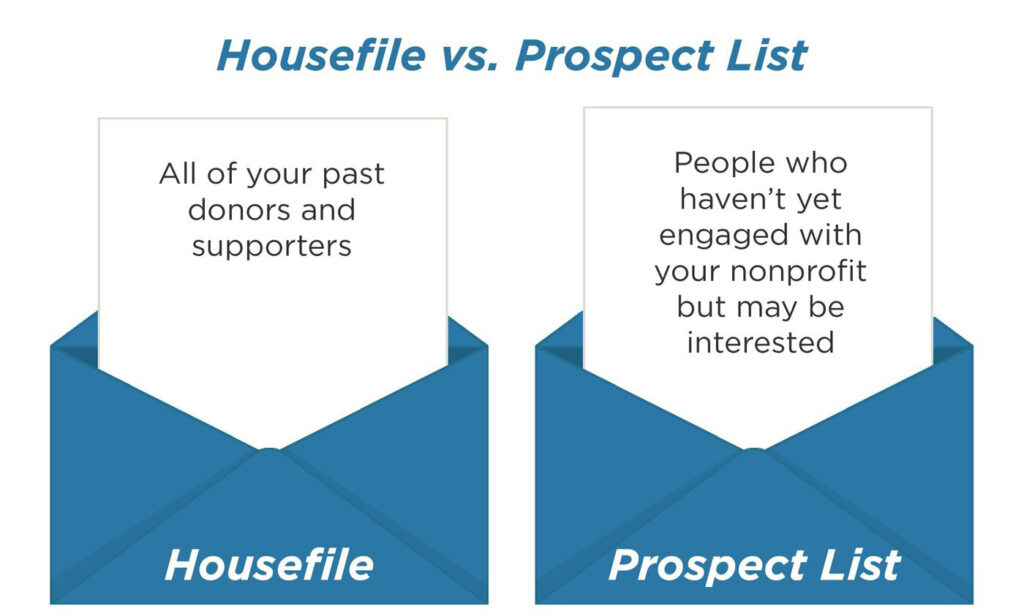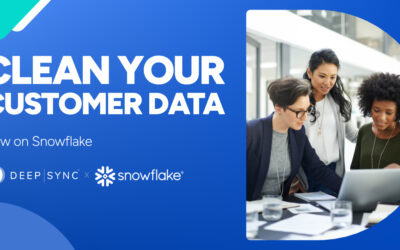As marketers in the nonprofit sector focus on the impact of AI and postal rate increases, your organization may wonder if traditional fundraising channels like direct mail are still worth investing in. If you haven’t been seeing results from your direct mail campaigns, it may seem like the time for this fundraising avenue has passed.
However, the reality is that direct mail continues to be an impactful, successful strategy for everything from donor acquisition to capital campaigns to year-end fundraising in 2024 and beyond. All it takes is a compelling message and a data-informed approach.
In this article, we’ll explore four ways data can help your nonprofit improve your direct mail campaigns and earn more fundraising revenue from this tried-and-true channel. Let’s get started.
1. Expands Your Reach
A common concern with direct mail is that your organization may be missing opportunities by unknowingly sending mail to the wrong addresses. When donors move, they have to change their address on their driver’s license, bank account, and other vital records; they probably don’t have the time or energy to update their contact information with your nonprofit.
This is a valid concern, but it’s also one that you can work around to expand your organization’s reach. Using professional data hygiene solutions, data appends, donor surveys, and external sources, your nonprofit can easily keep your mailing lists up to date.
Meyer Partners’ direct mail fundraising guide explains that there are two main data sources you should use to expand your reach with direct mail:

- Housefile: Your housefile is a list of all your organization’s past donors and supporters and their mailing addresses. Keep this data up-to-date with a data append or by regularly asking supporters to update their contact information by filling out a survey. When you make these updates, you’ll reach donors you may have lost contact with, opening the door for them to renew their support.
- Prospect Lists: A prospect list is a list of addresses of people who have not yet engaged with your nonprofit but may be interested in doing so. You can purchase, rent, or trade one of these lists with another organization. Either way, you’ll receive a fresh list of potential audience members you can reach with your appeals.
The donor data on these lists must be clean, accurate, and up-to-date to make a difference for your nonprofit. Be sure to engage in data hygiene best practices like using uniform data entry standards and regularly auditing your contact data to maintain its accuracy.
2. Improves Audience Targeting
Once you have an updated housefile and prospect list, use your existing donor to segment donors and prospects based on shared characteristics. Find similarities in supporters’ demographics, previous involvement, donation history, or any other factors that might increase the chances of securing a donation from someone. Then, create segments based on this data to target audiences who are most likely to support your nonprofit or organization.
For example, say that you’re raising money for a campaign to build a new food pantry in your local community. You want to send direct mail appeals to the supporters and prospects who are the most likely to give to the campaign, so you turn to your donor data to determine the best target audience.
Your process might look something like this example:
- Since the campaign is local, you first segment your housefile and prospect list by location. Everyone with a local address or area code goes into one group.
- Next, you segment supporters further based on charitable interests. Anyone who has shown interest in food insecurity campaigns in the past—whether by interacting with your nonprofit or contributing to another one—goes into another group.
- From here, you craft two different appeal letters. One appeal goes to the first group of local prospects and highlights their ability to make a difference in their community by donating. The other version gets sent to the second group and focuses on how much your new food pantry will help decrease food insecurity in their hometown.
When recipients open a letter that speaks directly to their interests, they’ll be much more likely to get involved or donate to the campaign.
3. Increases Personalization
You already know you can make appeals feel more personal by addressing every recipient by name, but what else can you do to ensure that your recipient feels like you’re talking to them on a personal level?
The answer is to use the data you’ve collected on supporters’ personal interests and past engagement with your nonprofit to make your appeals more relevant. When possible, also call out specific ways they’ve contributed to your cause to show them that you value them as part of your organization’s community.
For instance, you might:
- Use giving and engagement data to highlight specific causes and campaigns that align with donors’ charitable interests.
- Thank donors for their past contributions, mentioning the specific donation amount and its tangible impact.
- Leverage event registration and volunteer sign-up data to thank supporters for past involvement and invite them to similar opportunities.
When supporters feel that your nonprofit appreciates them and that their contributions made a genuine impact on your cause, they’ll be more likely to renew their support and give again.
4. Helps You Tailor Appeal Content
Finally, use data analytics to discover various ways to effectively improve your fundraising appeals. Learn the best times to send appeals, which donors are most likely to give at higher levels, and which types of content lead to the most donations for your nonprofit.
To glean insights that help you tailor your direct mail messaging, analyze the following metrics:
- Peak giving times: Use the giving data in your CRM to determine what seasons, months, and days you earn the most donations. Then, send your direct mail appeals before and during those peak giving times.
- Response rates: Pay attention to which appeal letters get the highest rate of response. This may point to a specific tactic you used or a story you told in the appeal that especially resonated with recipients.
- Conversion rates: What kinds of appeals motivate people to give? Analyze conversion rates for multiple past direct mail campaigns to find out which ones were most successful. This will point you toward the most effective strategies for your nonprofit.
Investing in the right nonprofit CRM will help you easily find and visualize these metrics. If you’re looking for new software with better reporting features, explore resources like Kindful’s list of the best nonprofit CRMs to find a solution that will help your organization improve its data analysis capabilities.
Leveraging your data is crucial for any type of fundraising or nonprofit marketing campaign—not just direct mail. Once you get comfortable with using these strategies in your direct mail efforts, make sure to continue to use your data to its full potential to see success with the rest of your campaigns.












0 Comments